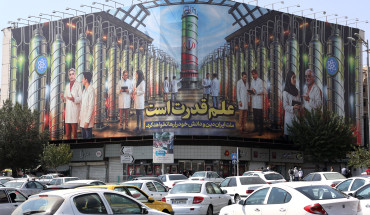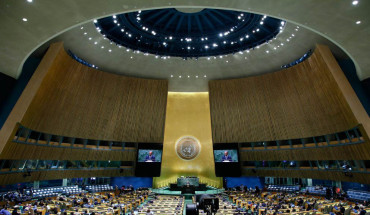Originally posted December 2009
The harm inflicted by three decades of war on the people and the country of Afghanistan have been cumulative. Hard statistics are difficult to find, and many of the available data are estimates. During the decade of war following the Soviet invasion in 1979, Afghanistan lost an estimated 1.8 million killed, 1.5 million disabled (among whom were more than 300,000 children), and there were 7.5 million refugees. More than 14,000 villages also were destroyed.[1] During the present war launched by the US against Afghanistan on October 7, 2001, estimates are that over 100,000 Afghans have lost their lives and many have been disabled.
The total number of children killed is not known. But, with a population where close to 50% are under the age of 20, the losses among the children can be reasonably assumed to be proportionate to the age distribution of the population. According to the UN High Commissioner for Refugees (UNHCR), about 235,000 are displaced.
Approximately 78% of Afghans live in rural villages. Families are large, with many children and extended relations. The accumulated body of information about the fate of the Afghan children provides prima facie evidence that they have experienced more dramatic harm than most in recent conflicts. During the 1980s, as part of the Soviet campaign to drive out the rural population, children were specifically targeted. Soviet forces kidnapped an estimated 50,000 Afghan children from villages, orphanages, and city streets in an effort to indoctrinate them in Communist ideology and use them to form militias. Soviet aircraft also dropped a variety of “toy” bombs on Afghan villages and rural fields — mines and bombs made to look like toys — which maimed many children.
Children also suffered during the civil wars fought among different factions between 1989 and 2001, when many were recruited into militias. More recently, US/NATO airstrikes have killed a number of children in villages across the southern and eastern provinces.[2]
Afghan children have been kidnapped and sold as “terrorists” by members of the Northern Alliance to the US Special Forces for $5,000 each.[3] According to some reports, they have been imprisoned for years in Guantanamo Bay and in secret prisons in Afghanistan.[4] Afghan children also have been forced into armies, the police force, and militias. The United Nations Children’s Fund (UNICEF) reported from Kabul on June 24, 2004 that 2,205 children between the ages of 14-18 were demobilized. UNICEF also reported that there may be as many as 8,000 remaining child soldiers, police, and militiamen.
The hazards of war have taken other forms as well. The United Nations Office for the Coordination of Humanitarian Affairs (UNOCHA) reported in 1999 that 31% of Afghan children had been victims of land mines. Even in 2007, land mine casualties numbered 811, many of them children. Children, like the general population, also have been subjected to dangerous radiation through aerial and ground attacks where depleted uranium bombs and shells have been used.[5] Cluster bombs, resembling food containers, also have injured children.[6] Compunding the problem, according to UNHCR’s Director in Kabul, Ruud Lubbers, “the Kabul government asked us to stop assistance to the refugees.” As a result, some of these refugees, including children, died of exposure to the cold.[7]
Ariana television reported several times that children were sold for food by their families in the north during the 2007 drought. They have been put to work at young ages, with some 60,000 working on the streets of Kabul in 2009 and denied schooling.
Furthermore, missionaries are robbing their religion from them in exchange for food help and school supplies.[8] The Afghan children have grown up as refugees and IDPs, and they have suffered from neglect and a lack of laws and institutions to protect them.
As a result of these conditions, Afghan children suffer from one of the highest mortality rates in the world. According to UN data, the mortality rate for Afghan children under five years of age ranked second in 2007. The UN Development Programme (UNDP) reports that 42% of the Afghan population lives on less than one dollar per day, while UNICEF reported acute malnutrition among 16% of Afghan children. Life expectancy remains low, at 44 in 2007. According to the UNDP Human Development Index, Afghanistan stands at 174th among 178 countries. With such grim statistics for the adult population, children would be unable to thrive even under peaceful conditions.
A large number of Afghan children are physically disabled. During the late 1980s, according to United Nations estimates, more than 300,000 Afghan children, victims of war, were disabled. A survey taken in 2005-2006 found that there were between 747,500 and 867,100 disabled Afghans, or 2.7% of the population. More than 50% of the disabled lived in Kabul, Khandahar, and Heart — areas which have seen the most fighting during the past three decades. Among the disabled, half were under the age of 19.[9] Thus, there are probably over 400,000 disabled Afghan children, victims of direct conflict and leftover landmines.
Afghan children also have had to contend with the destruction of the educational system. Much of this destruction occurred during the Soviet occupation.[10] Following the Soviet retreat in 1989, there were not enough schools and, due to constant conflict, rebuilding the education infrastructure to meet the demands of the larger population and modern educational requirements was nearly impossible. Since 2001, the argument that much progress in education has been made is repeated often. The most frequently cited statistic is that more than five million children, both boys and girls, now attend school. Given that in 2001 one million children were going to school, the new figure is good news.
But this good news offers an incomplete picture. In fact, just as many children of school age do not go to school due to a variety of constraints, including the primary reason — they serve as the main income earners for both urban and rural families. In addition, schools are not evenly distributed throughout the country; in the south and east, for example, where the war is being fought, few schools are operating. Some of the problems faced in this area are discussed in two recent reports from Kabul. These reports disclose, among other things, the practice of US and other foreign military forces of offering school supplies as part of its campaign to win over the population, which has placed children and the schools that they attend at risk of attack by armed insurgents.[11]
Conclusion
In 2009, the high death toll continues.The UN Assistance Mission to Afghanistan (UNAMA) reporting from Kabul said that 1,013 civilians were killed in the war from January to the end of June 2009, compared to 818 in the first half of 2008 and 684 in the same period in 2007.
Meanwhile, as many as six million Afghan children are acutely vulnerable. They are not attending school. They are searching for work on urban streets and in fields. And they are at risk of exploitation, poor health, severe injury, and needless death. They are the tragic victims of war in a society whose institutional support systems had been weak or nonexistent prior to the outbreak of conflict 30 years ago, and which have been nearly impossible to rebuild since. A society where the traditional social networking and customs once offered protection has all but disintegrated. Peace is the first prerequisite for the long and arduous task of rescuing Afghanistan’s children from this tragic plight.
[1]. See M. Siddieq Noorzoy, “Economy in Modern Afghanistan,” Encyclopedia Iranica, Vol. VIII, 1997, pp.163-169.
[2]. One such aerial bombing occurred on July 6, 2008 during a wedding ceremony, as reported by Alastair Leithead on BBC’s web site, “Afghan Survivors Tell of Wedding Bombing.” This bombing killed 52 Afghans, among whom there were 39 women and children, including the teenage bride. The next horrendous bombing came on August 21, 2008 against the village of Azizabad in the Shendand district of Herat, which killed 90 innocent Afghans according to local people, officials in Kabul, and a UN report, and as reported by the New York Times on August 27, 2008. Among these victims were 60 children. On October 16, 2008 BBC radio and Ariana television (Kabul) carried news of yet another aerial attack in Helmand that killed 27 Afghans, among whom were 18 women and children. On May 4, 2009 another aerial attack took place in Farah, which according to the Afghan media killed 147 Afghans, among them 65 children. Ariana and Tolo television networks from Kabul report daily losses of Afghan lives from the war.
[3]. In February 2004, BBC radio reported on three such cases, including an interview with one of them.
[4]. According to an account by the Associated Press in June 2008, the Pentagon reported to the UN Committee on the Rights of the Child that ten Afghan children were being held in detention centers in Afghanistan. One of them, Mohammad Anwar, who was 12-years-old when imprisoned, was released on August 20, 2009 from Guantanamo after six years. Ariana television reported on August 21, 2009 that he is suing the US government for torture and abuse.
[5]. On December 25, 2007, Dr. Akram Babury and on July 9, 2008, Dr. Mirakai described this tragedy on Payam-e Afghan satellite television from Los Angeles — displaying slides and pictures of deformed Afghan children, some cancer victims — whose deformities and ill health seemed to be caused by depleted uranium shells used in the present war.
[6]. See David Edwards and David Cromwell, “Cluster Bombs and ‘Calamity Conditions’ in Afghanistan,” Media Lens, January 24, 2002.
[7]. Quoted in Dawat, Norway, December 2002, p. 3. The refugees were the same Pashtuns from Zhere Dasht in the southwest that had been driven earlier from their homes in the north by criminals and members of the Northern Alliance.
[8]. This practice reportedly has also been used by non-governmental organizations operating in Afghanistan. NBC News reported on May 18, 2006, for example, that US missionaries in Kabul had converted 2,000 Afghans, including children, to Christianity. The Internet has many stories of Christian proselytizing in Afghanistan. Such missionary work sets a dangerous precedent in a highly conservative Islamic society — not to mention that it places Afghans, especially children, at great risk.
[9]. Handicap International has been working in Afghanistan since 1980, and it has expanded its programs more recently. There are a series of five reports on its web site on various issues related to disability. See hhtp://www.handicap-international.us.
[10]. See M. Siddieq Noorzoy, The Social and Economic Consequences of Soviet Policies in Afghanistan (Miami: FL: Institute for Soviet and East European Studies, 1987), especially pp. 23-34.
[11]. Radio Free Europe/ Radio Liberty (RFE/RL) reported that some of these children were from Kabul. See Ajmal Samadi, “Education Policy Today Will Determine What Afghanistan be in 2020,” RFE/RL (Kabul), August 31, 2009.
The Middle East Institute (MEI) is an independent, non-partisan, non-for-profit, educational organization. It does not engage in advocacy and its scholars’ opinions are their own. MEI welcomes financial donations, but retains sole editorial control over its work and its publications reflect only the authors’ views. For a listing of MEI donors, please click here.













